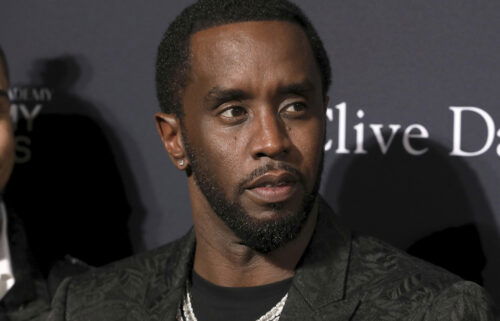‘Sinners,’ shot on IMAX film, is a historic first for female cinematographers

By LINDSEY BAHR
AP Film Writer
Cinematographer Autumn Durald Arkapaw didn’t realize she was going to make history on “Sinners.” The Ryan Coogler film, now playing in theaters nationwide, marks the first time a female director of photography has shot a movie on large format IMAX film.
It was Kodak executive Vanessa Bendetti who texted her the news.
“I smiled at the thought,” Arkapaw said in a recent interview. “I felt very proud that Ryan gave me the opportunity.”
The format, a favorite of filmmakers like Christopher Nolan, has gained popularity in recent years — not just with directors but with moviegoers seeking it out as well. Coogler hadn’t originally sought it out for “Sinners” (he had planned on using 16 mm) until Warner Bros. executive Jesse Ehrman asked him if he’d considered large format, which gives moviegoers more resolution and a shallower depth of field.
“Just from an exhibition sense in this day and age with folks having so much access to streaming and watching so many things on their phones, it’s nice to have a format like IMAX that can be an experience you can only experience in the theaters,” Coogler told The Associated Press.
Coogler and Arkapaw then began a testing process, looking at 70 mm IMAX prints of films like “2001: A Space Odyssey,” “The Hateful Eight” and “Tenet” and consulting with Nolan and his regular cinematographer Hoyte van Hoytema. Coogler quickly fell in love with the format and felt it was fitting for the larger-than-life, genre-bending film about vampires, the blues and life in the Jim Crow south in 1932.
“I wasn’t surprised that we were exploring large format,” Arkapaw said. “We shot ‘Wakanda Forever’ on IMAX, but that was digital. We always talked about true IMAX being … something that you see and you fall in love with.”
Her conversation with Hoytema made her even more excited. The Oscar-winning “Oppenheimer” cinematographer told her not to worry about the size or weight of the equipment and to shoot the movie as she would with any other kind of camera.
“Hearing that straight off was inspiring and encouraging and we took that advice and just told our story,” Arkapaw said. “It was very freeing.”
In the end, they decided to employ a combination of IMAX film and Ultra Panavision 70, an even rarer format that Quentin Tarantino resurrected for “The Hateful Eight.” This means different scenes have different aspect ratios, which Coogler himself broke down in a video explainer for Kodak.
“We’re using these two formats for the very first time,” Coogler said. “It really complements the story, it really complements the setting and it really complements the filmmaking.”
One of Arkapaw’s favorite scenes was one they weren’t even initially going to do on IMAX film because it was dialogue heavy and the cameras are notoriously noisy. But if her work on “Wakanda” taught her anything about Coogler, it’s that he’s always looking to push boundaries.
The scene is the introduction to Jack O’Connell’s Irish vampire Remmick and the Choctaw trying to hunt him down, which they shot like a Western as the sun sets in the distance.
“We had a lot of beautiful crane work in that and some intimate stuff. Ryan loves a hallway, so there’s a Steadicam shot inside. It’s very eerie,” she said. “I can’t see that scene in any other format now.”
With “Sinners” out now, the hope is that audiences will seek out the special formats where they can, whether it’s IMAX film or digital.
“We want to bring people back to the cinema, get back to theaters,” “Sinners” star Michael B. Jordan said. “I think this is a movie that’s meant to give for the moviegoing experience…it takes you on a ride.”
The profession has come a long way since Arkapaw started exploring cinematography as a career path. It wasn’t too long ago that she said she struggled to find many women cinematographers besides Ellen Kuras (“Eternal Sunshine of the Spotless Mind”). And while there are more than there were 20 years ago, there are still barriers to be broken, including an Oscar win. Only three have been nominated: Rachel Morrison (who worked with Coogler on “Fruitvale Station” and “Black Panther”) was the first for “Mudbound,” in 2018, followed by Ari Wegner for “The Power of the Dog” and Mandy Walker for “Elvis.”
Arkapaw takes the significance of her landmark seriously.
“I heard a phrase that said you need to see you to be you,” she said. “I think for us females in business, the more women are able to shoot on large format, it will inspire the younger girls who maybe don’t think that they can get there.”




